Tea House Trekking in Nepal
When I first learned of Annapurna base camp trekking, I also encountered what they call tea houses. So, what can you think of when you hear the words tea house? I, being a shallow person, imagine people in pairs or groups sitting around a small table sipping a hot cup of tea. You know what I mean?
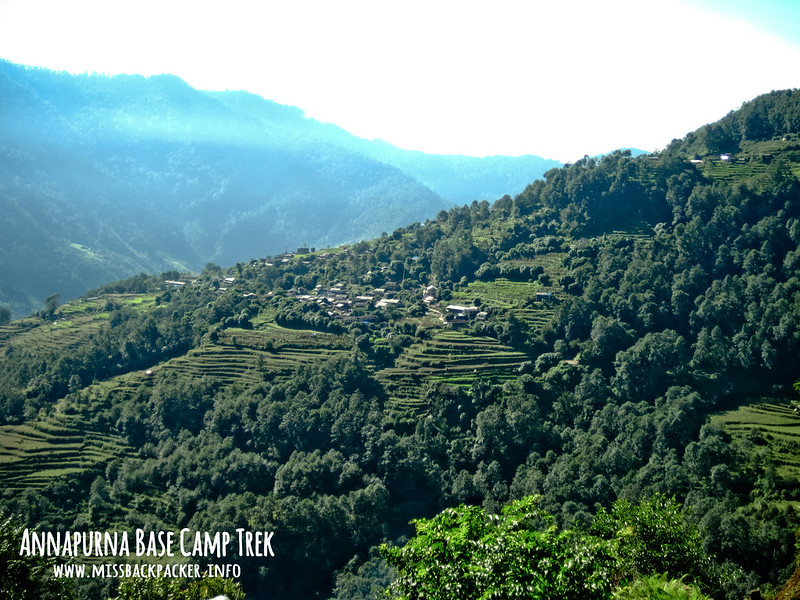
Apparently, I’m quite right. The only thing I didn’t know was, Nepali tea houses not only serve hot tea or coffee but they also have rooms where trekkers can comfortably spend a night after an exhausting day of hiking. Yes, they also are lodges. Trekking in Nepal especially in the regions of Everest, Annapurna, and Langtang are filled with tea houses making them the most popular trekking spots in the Himalayan country even in the rest of the world.
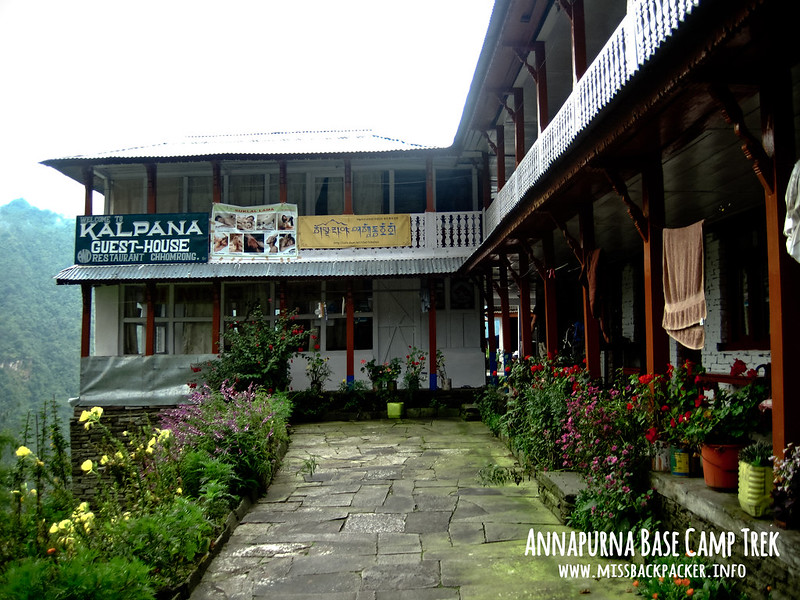
If you happened to have experienced trekking in the Philippines, tea house trekking can be quite a shocker. If we need to bring tents, cook wares, lanterns, food, and other stuff needed for a night camping in the PH, tea houses in Nepal got all these covered for you. For a price of at least 100 Nepali Rupees (NPR) or 1$ per night, tea houses offer so much convenience to trekkers that some keep coming back yearly.
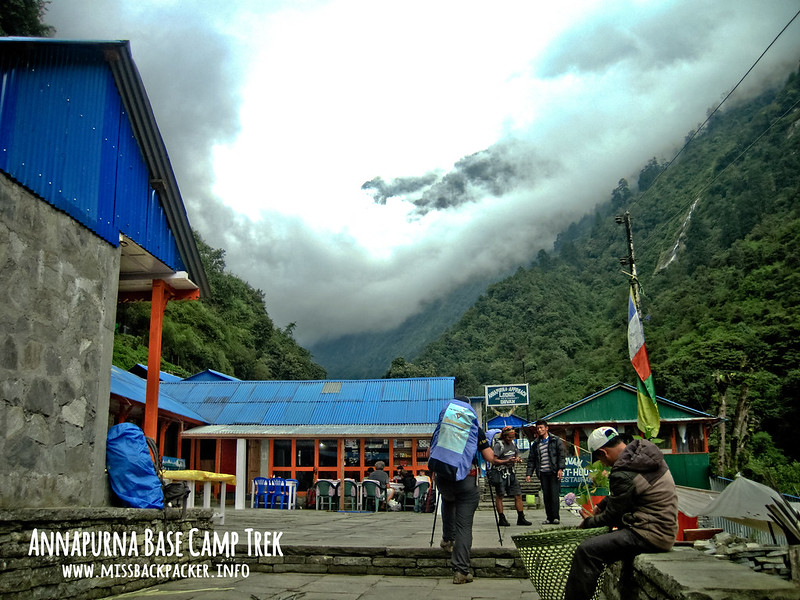
The type of accommodation each tea houses provide really vary. One tea house has hot shower for free while the other may ask for 150 NPR ($1.50). The higher the elevation is, the higher the prices and rates are. Say a bottle of soda costs 100 NPR in Ghandruk Village which is at 1940 meters above sea level (MASL); this can go up to 400 NPR at the base camp, at least 4130 MASL. Had I owned a tea house in Nepal, I might ask for more because carrying that kind of load up to the mountains is not easy, I’m telling you.
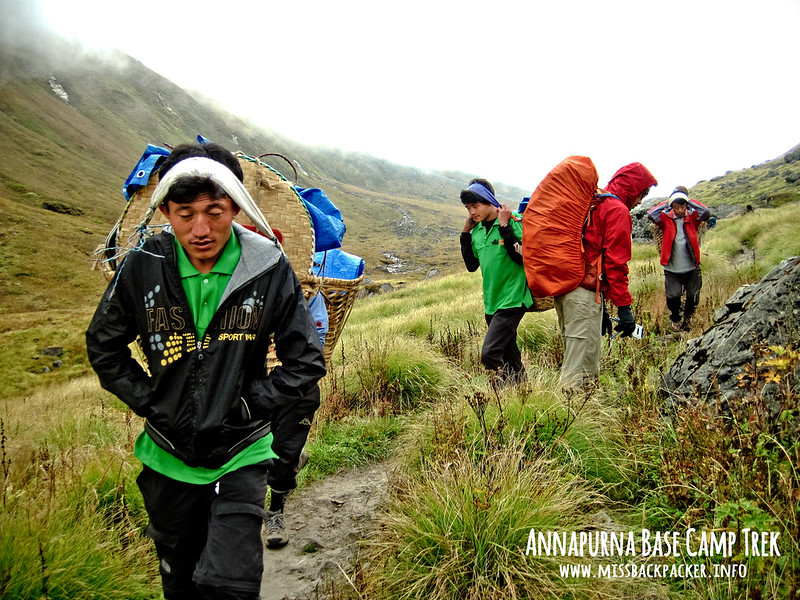
I created a checklist of the things needed during the trek and I listed sleeping bag as an optional item. I said so because tea houses issue thick blankets so thick we almost had a heart attack when we were at the base camp because it was so heavy we couldn’t move that easy. We even had a good laugh when, during one breakfast, we all agreed that using a blanket keeps you really, really warm to the point you’d sweat; but if you take it off, you’d shiver out of cold. As a result, half of our bodies were covered with blankets and the other half were exposed to the cold breeze.
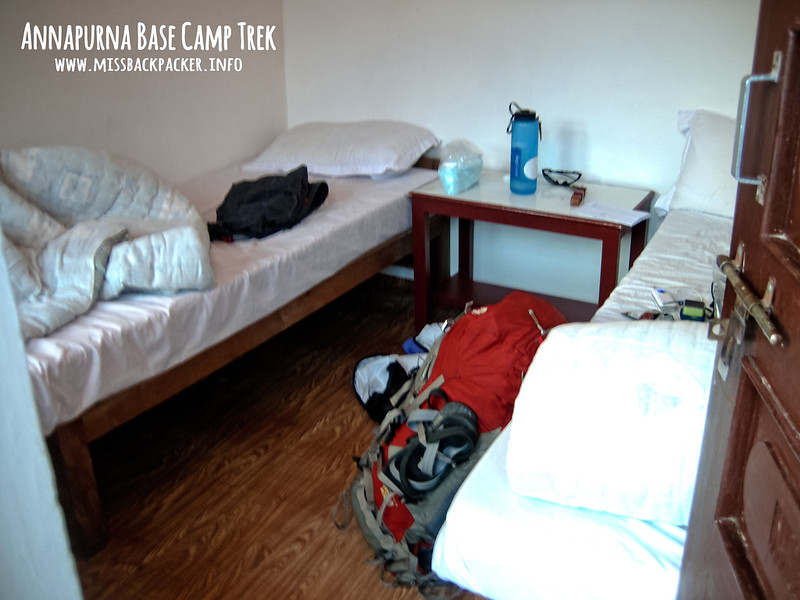
Some rooms of the tea houses can accommodate two persons only, some can take in up to six people. Larger rooms or dormitories are usually those at the higher villages. Don’t be surprised if you share the room with a stranger because tea houses can be pretty much congested especially during the peak of the trekking season. Also, rooms have no private bathroom; you need to go out and find the nearest, which can be challenging at night as temperature really drops when it’s dark.
Bathrooms in the tea houses are classified into two: the regular bathroom and the Western bathroom. Regular bathrooms have toilets that are laid flat to the ground, the type you can see in provinces. The Western baths, well, you already know how it looks like. Pardon me for not having any photos to show as I was too grossed out to take even one snapshot.
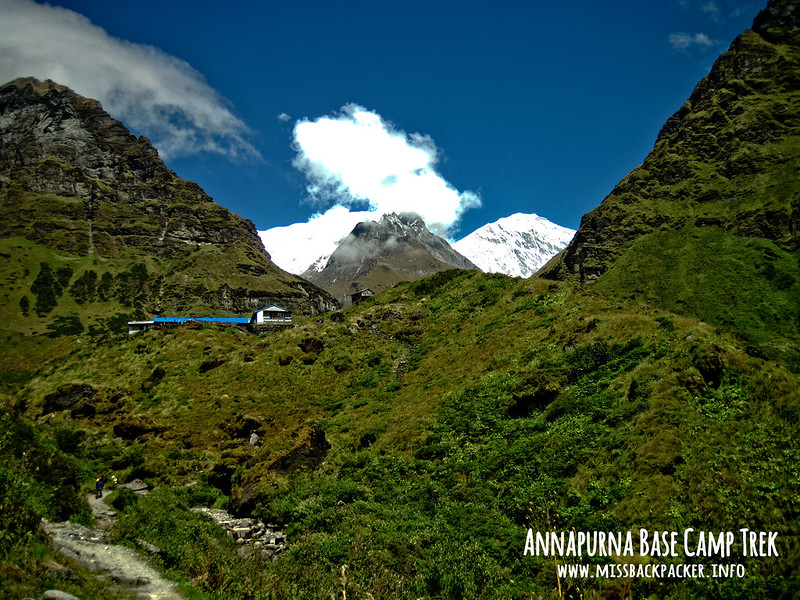
If you’re wondering whether you need to book rooms prior your arrival, I’d say it’s better than reaching a village with nowhere to sleep. Great thing about having a guide is they can arrange things like this for you at no extra charge. Most tea houses also have makeshift beds in the dining or common area that also serve as sleeping quarter of the guides, Sherpas, and porters. Trekkers can also sleep here and know more about the customs and culture of Nepal by sharing stories with the locals sleeping in the area. But if push comes to shove and there’s really no place to sleep, then you have to move on to the next village. Just pray that it isn’t some good three hours away.
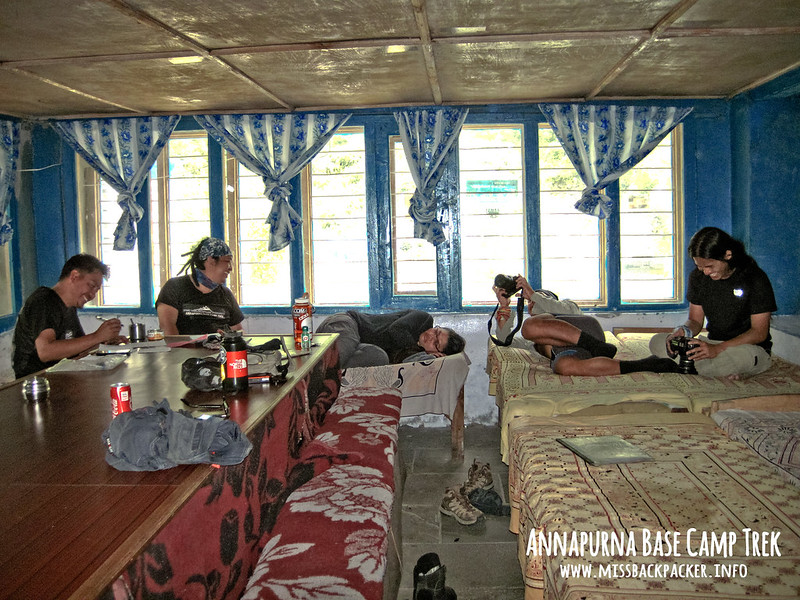
Now, the food. Contrary to some notions of Hindu and Buddhist food lifestyle, tea houses don’t just serve vegetables. Believe me or not, they also cook pasta, soup, fried food, and steaks. And mind you, delectable steaks. Food would cost you at least 400 NPR per big serving and 200 NPR for a bottle of expired soda. And according to our guide, an expired bottle of Coca-Cola is nothing but normal.
The only downside of eating in the tea houses is the time of food preparation and its service. On a good day, you only need to wait for an hour but it sometimes can take up to two hours or more depending on the type of food and the number of orders. If you want to eat authentic Nepali cuisine, I suggest you try dal bhat. It’s a mixture of potatoes, lentil beans, curry, and unlimited rice and soup.
Also, as a sign of respect to the locals and their spiritual beliefs, meat (beef, pork, chicken, goat, etc.) is only allowed to the village before Bamboo. That’s the third day of our trek.
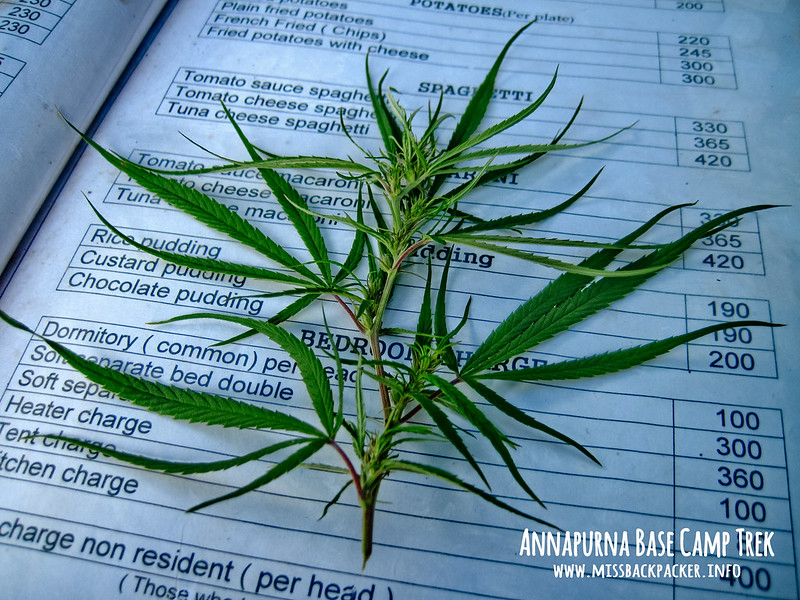
See, tea houses can make each trekkers lives far better that tea house owners request for one thing: do not bring your own food. Given the cheap price of the rooms with complete blankets, pillows, and bathrooms, you wouldn’t want to deprive these locals from earning a, what, $4 for a meal they have to manually carry to the mountains. That’s Php 200, which is the cost of a cup of coffee in Starbucks.
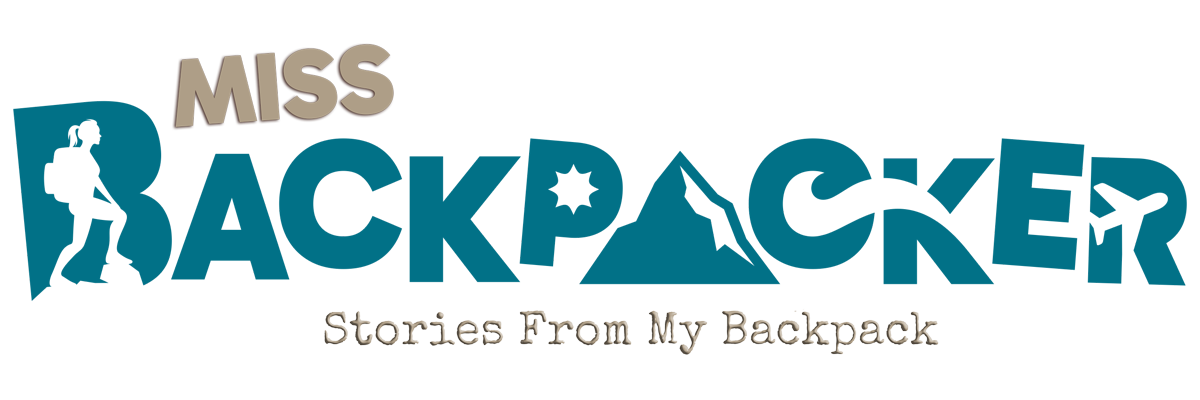
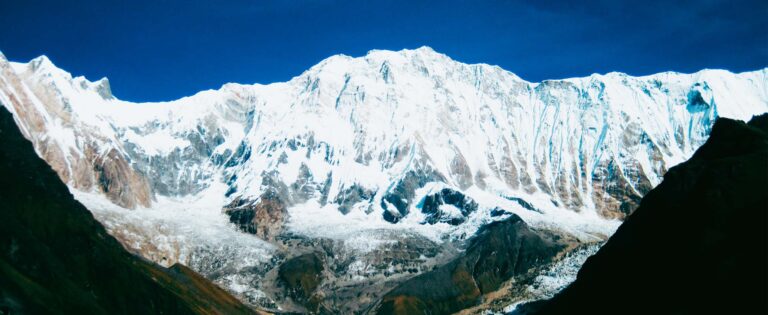
Balak din sana namin mag base camp next april, quick question, how many hours a day ang trek nyo before you retire for the day? as in whole day ba talaga? 🙂
Hello, Sir! Normally, eight to ten days ang trek to ABC. That is if you want a relaxed hike. Yung samin kasi siniksik namin into seven kaya 7 am pa lang naglalakad na kami then we’d arrive 4 or 5 pm. 🙂
whoa ang haba pala ng hiking time per day! hardcore ba yung mga trails? kaya ba sya ng mga ordinaryong tao na hindi naman mountaineer?
saka pala yung 10 days na relaxed pace, back and forth na yun or one way pa lang? 2 weeks lang kasi kami sa nepal ih
salamat kaiz! 🙂
Ten days back and forth. 🙂 And don’t worry about the trail, walang sinabi yung trail nila sa trails natin dito. Sabi nga namin, papuntahin natin yung mga Sherpa dito sa Pinas, mahihirapan yang mga yan. It’s 85% steep steps and the rest ay parang walk in the park. Mahaba lang talaga sya.
There’s no need to hurry kasi your body needs to acclimatize, which some fail to do kaya nagkaka-altitude sickness.
Maraming salamat Kaiz! Abangan ko the rest of the series nito para guide namin next year 🙂
Welcome! Pilitin ko matapos agad yung posts para may idea na kayo. Excited for you and your company! 🙂
Namaste and Warm Greetings from
Himalayan Country Nepal!!!
Trekking Guide & Tour Operator
My name is Sanjib Adhikari. As an independent trekking guide and tour operator
in Nepal, I would like to welcome everyone in my motherland country, Nepal.
With the keen interest in the adventure tourism,
I have been involved in this field at a very young age. Pursuing my career in
different capacities as porter, assistant guide, I have developed myself as an
independent trekking guide and leadership in various outdoor
activities. Licensed and fully certified from the Government of
Nepal, we plan and guide for exploration and adventure throughout Nepal.
http://nepalguideinfo.com/
http://www.hikehimalayas.com
http://nepalguideinfo.com/about-us/
http://nepalguideinfo.com/annapurna-trek/
http://nehttp://nepalguideinfo.com/everest-base-camp-trek/
http://nepalguideinfo.com/everest-trek/
Nepal
Planet Treks (Pvt. Ltd.)
Post Box: 4453 Thamel, Kathmandu, Nepal
Mobile: +977-9841613822
Email-:[email protected]